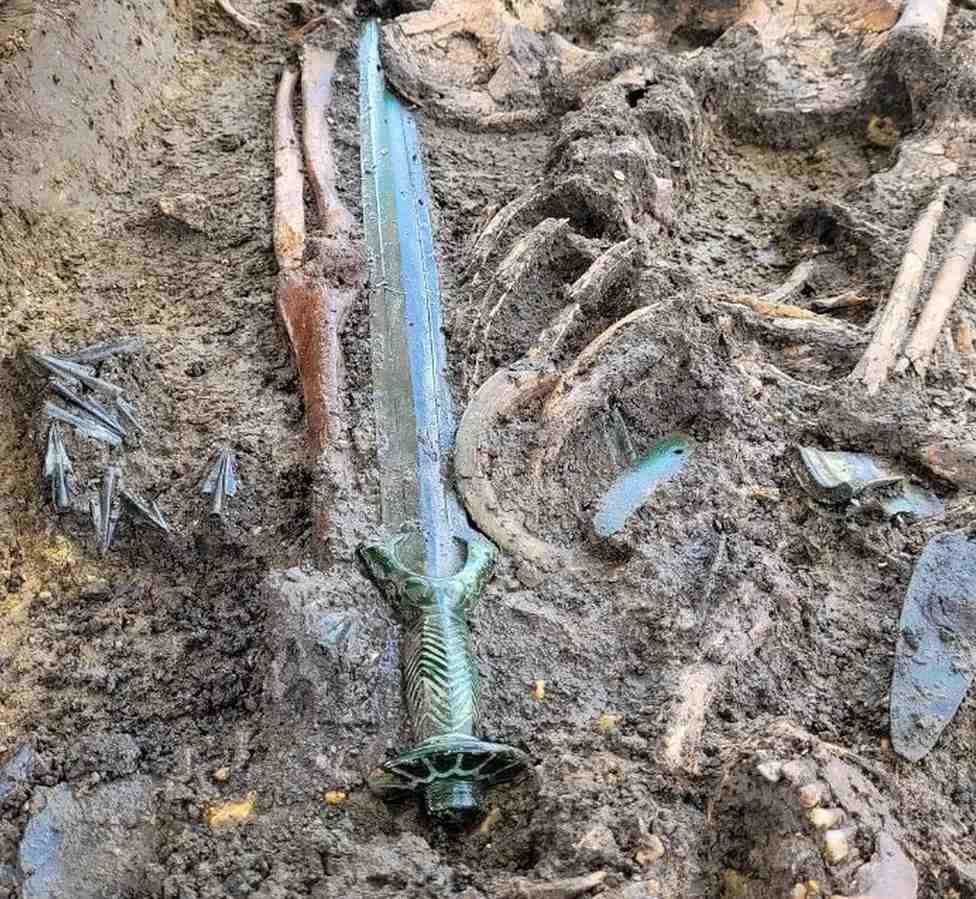
It looks fake at first glance—how could 3,400 years of time leave a hunk of metal so untouched?
Yet when archaeologists from Bavaria’s State Office for Monument Protection first uncovered the sword, it literally “almost still shines.”
Found in the grave of a man near the town of Nördlingen, the sword is thought to have been forged in bronze during the 14th century BCE using the most sophisticated methods available.
Early swords and long knives from the Homeric Bronze Age in Greece were cast in bronze from a single mold—like a bronze statue. The Nördlingen weapon by contrast was made by casting the hilt onto the previously-made blade.
The grave contained the remains of a man, a boy, and a woman along with bronze arrowheads and other objects. Archaeologists aren’t sure if they’re related.

The sword, which has an octagonal pommel, is believed to have been a real, functional weapon, but was probably not meant to be used in anger.
If the dating of the weapon is correct, it was probably made in the Tumulus Culture, the dominant Middle Bronze Age Celtic society in central Europe, extending from the Carpathians to the Rhine.
A warrior society, the Tumulus people were nevertheless skilled metalworkers, especially in gold and bronze, and the earliest metallic representation of a human body part ever found in archaeology corresponds to these charismatic Europeans.
SHARE This Stunning Find With Your Friends…



















